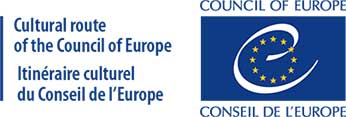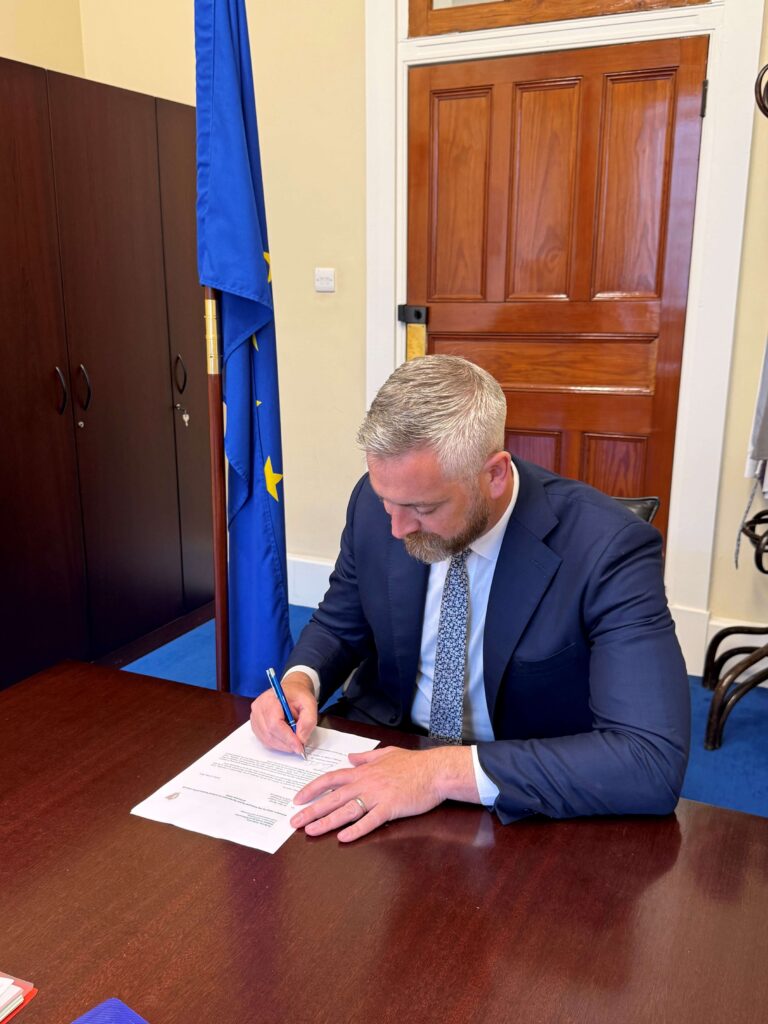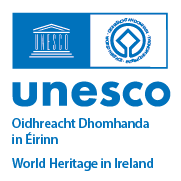Introduction to Cultural Routes of the Council of Europe (Cultural Routes)
Launched by the Council of Europe in 1987, the Cultural Routes demonstrate, through a journey through time and space, how the heritage of different European countries contributes to a shared and living cultural heritage. The Cultural Routes are grass-roots networks promoting the principles which underlie all the work and values of the Council of Europe: human rights, cultural democracy, cultural diversity, mutual understanding and exchanges across boundaries. They act as channels for intercultural dialogue and promote a better knowledge and understanding of European history. Ireland formally joined the Cultural Routes in 2025.

What is the “Cultural Routes of the Council of Europe”?
The Cultural Routes aims to demonstrate that the heritage and culture of different European countries contributes to a common cultural heritage, by offering journeys through space and time, on different themes shared by several European countries.
These routes allow visitors to discover diverse places according to the chosen themes: pilgrimage routes, historical or literary figures, tangible and intangible heritage, arts in all forms, living traditions, etc.
These routes enable cooperation in many areas ranging from culture to heritage, education and tourism, and bring together different types of stakeholders: professionals, institutions, heritage associations, local authorities, tourism and hospitality stakeholders, etc.
These routes aim to encourage new forms of tourism (meaningful tourism, smart, sustainable and responsible tourism, etc.) and also can help distribute visitors to avoid overcrowding at certain sites. Following a Cultural Route allows visitors to discover tangible and intangible, cultural and natural heritage throughout Ireland and Europe.
The National Monuments Service acts as the focal point for the Cultural Routes in Ireland and is a member of the Governing Board of the Enlarged Partial Agreement on Cultural Routes.
What are the criteria for “Cultural Routes of the Council of Europe” certification?
To be certified as a “Cultural Routes of the Council of Europe”, applicants must satisfy the following criteria.
Themes
- A potential network must satisfy all of the following thematic criteria:
- Be representative of European values and common to at least three countries of Europe;
- Be researched and developed by groups of multidisciplinary experts from different regions of Europe so as to ensure that the activities and projects which illustrate it are based on consensus;
- Be illustrative of European memory, history, and heritage and contribute to an interpretation of the diversity of present-day Europe;
- Lend itself to cultural and educational exchanges for young people and hence be in line with the Council of Europe’s ideas and concerns in these fields;
- Permit the development of initiatives and exemplary and innovative projects in the field of cultural tourism and sustainable cultural development;
- Lend itself to the development of tourist products in partnership with tourist agencies and operators aimed at different publics, including school groups;
- Be clearly reflected in the name of the cultural route; it must be concise and easily understandable.
Priority fields of action
A potential network must be relevant to the following priority areas:
- Co-operation in research and development: projects must play a unifying role around major European themes and show how these themes are representative of European shared values;
- Enhancement of memory, history and European heritage: projects must enhance tangible and intangible heritage, especially in lesser known areas, and explain their historical significance through Europe;
- Cultural and educational exchanges for young Europeans: projects must organise activities with young people in order to promote the concept of European citizenship;
- Contemporary cultural and artistic practice: projects must encourage activities and artistic practice which explore the links between their European theme and contemporary culture;
- Cultural tourism and sustainable cultural development: project must promote dialogue between urban and rural cultures, developed and disadvantaged regions, and between majority and minority. They must actively involve media and seek partnerships with tourism organisations to draw attention on their European heritage and be part of the sustainable territorial development.
Network Criteria
Cultural Routes must form a multidisciplinary network located in several Council of Europe member States. In order to apply for certification, the network must:
- Present a conceptual framework based on research carried out into the theme chosen and accepted by the different network partners;
- involve several Council of Europe member States through all or part of its activities without excluding activities of a bilateral nature;
- plan to involve as large a number as possible of States Parties to the European Cultural Convention (ETS No. 18) as well as, where appropriate, other States
- ensure that the projects proposed are financially and organisationally viable;
- have a legal status, either in the form of an association or a federation of associations registered in a Council of Europe member State, established at least two years prior to submission of the application;
- operate democratically, ensure the widest membership among member States represented in its governing bodies, gender equality, and rotation in its elective positions.
Once certified, each route is subject to evaluation every five years.
Certification cycle timeline
To be awarded the “Cultural Route of the Council of Europe” certification, Cultural Routes networks must undergo an evaluation process in the framework of the annual Cultural Routes of the Council of Europe Certification Cycle. A certification cycle lasts approximately 10 months, from the deadline for submission of the evaluation files to the Secretariat (July 31 each year) to the notification regarding the decision on the renewal or award of the certifications (June 30 each year).
Application for certification
The next call for applications for certification as “Cultural Route of the Council of Europe” for the 2026-2027 Certification Cycle is not yet open. Applications normally have to be submitted by the 31 July in any given year. Cultural Routes networks interested in applying should notify their intention to apply to the Secretariat by sending an official letter in English or French to the attention of the Executive Secretary of the Enlarged Partial Agreement on Cultural Routes of the Council of Europe and Director of the European Institute of Cultural Routes, (by email to evaluation@culture-routes.lu) no later than 31st March 2026.

signing the Accession Letter to the Enlarged Partial Agreement on Cultural Routes of the Council of Europe.
Current Irish networks
Ireland currently is crossed by four of the 48 certified routes in Europe
More information on the Cultural Routes website
Contact: World Heritage Unit, National Monuments Service, email: culturalroutes@housing.gov.ie




